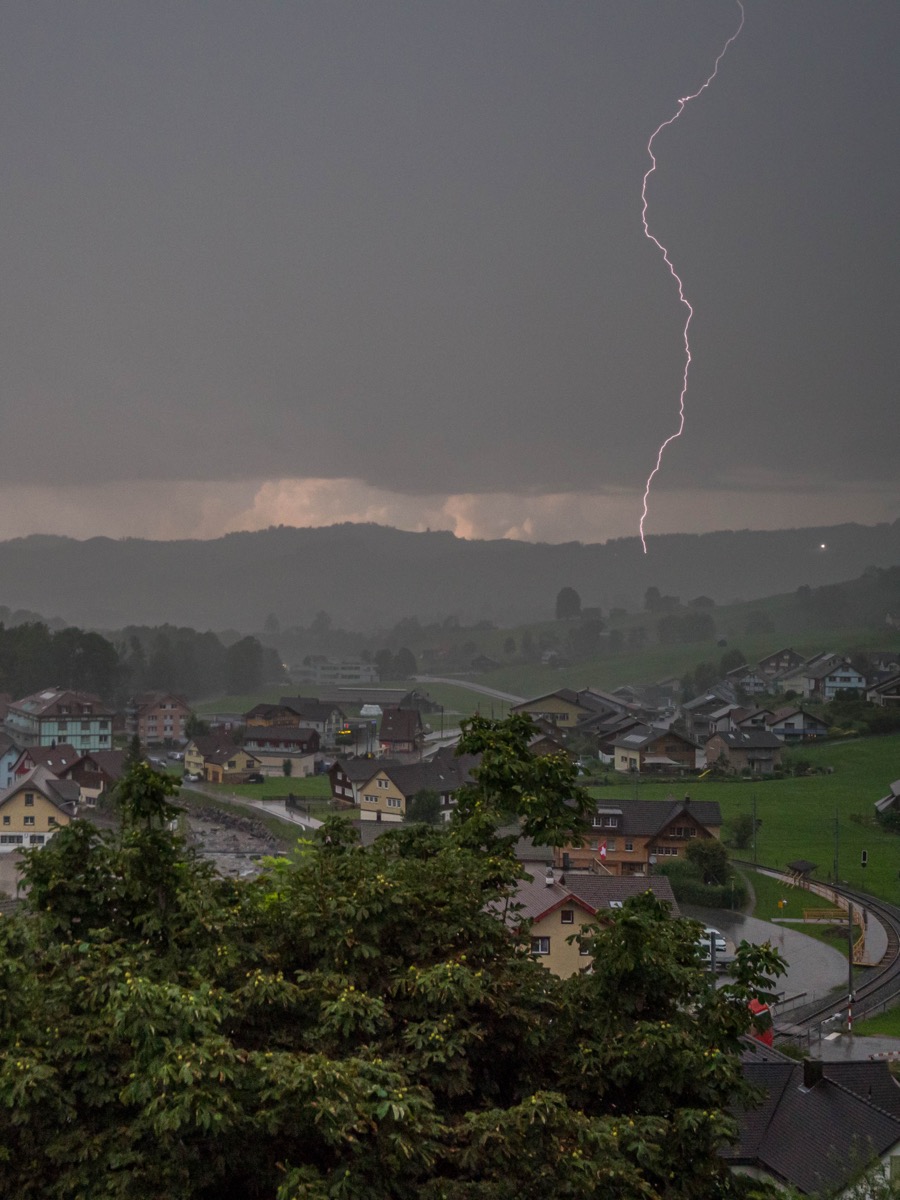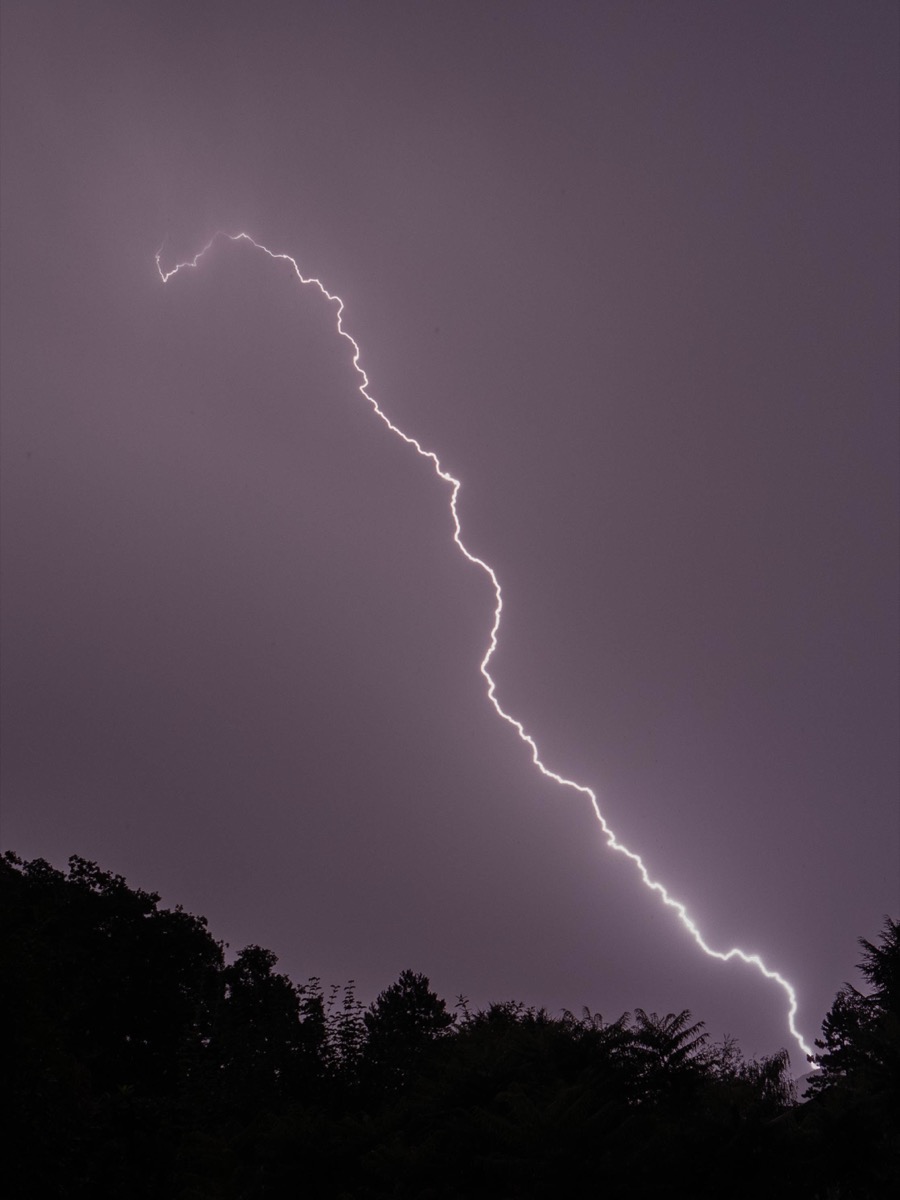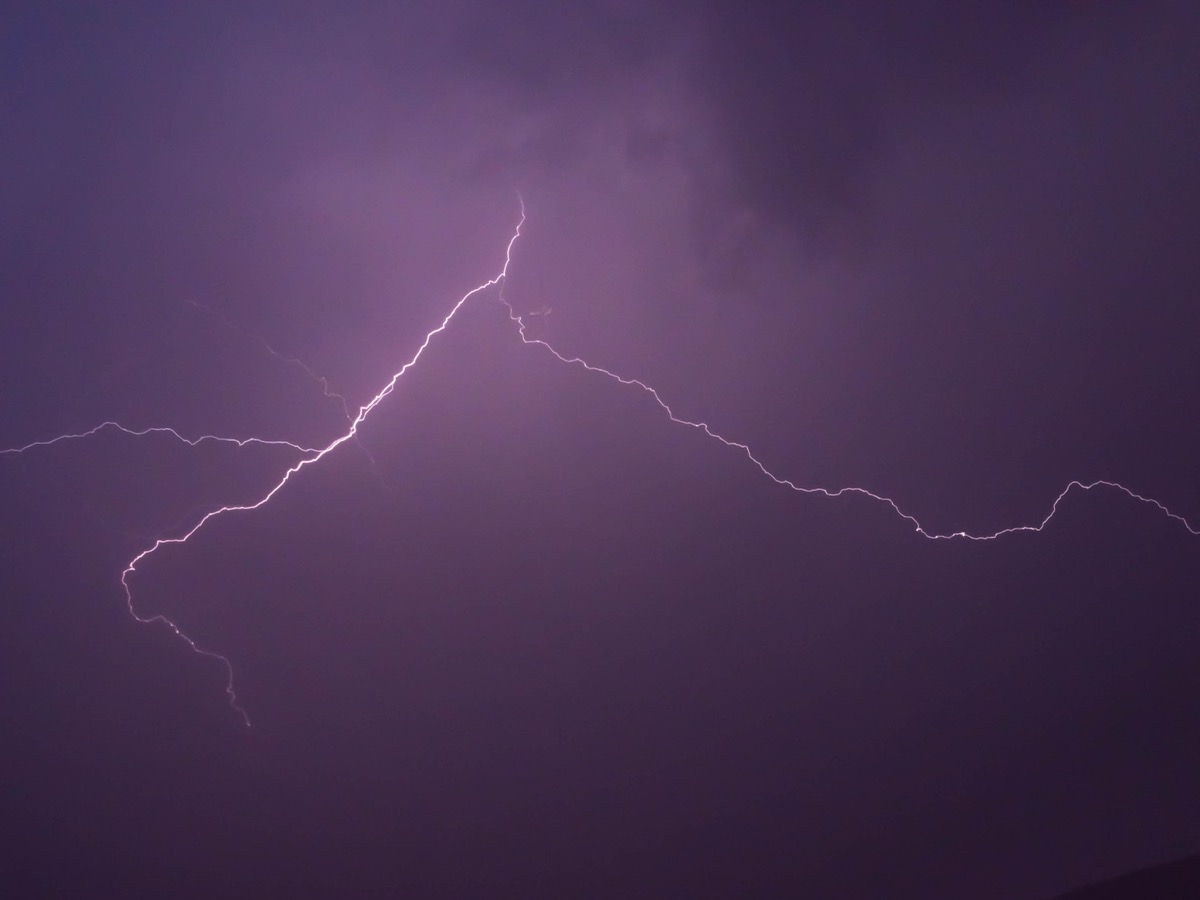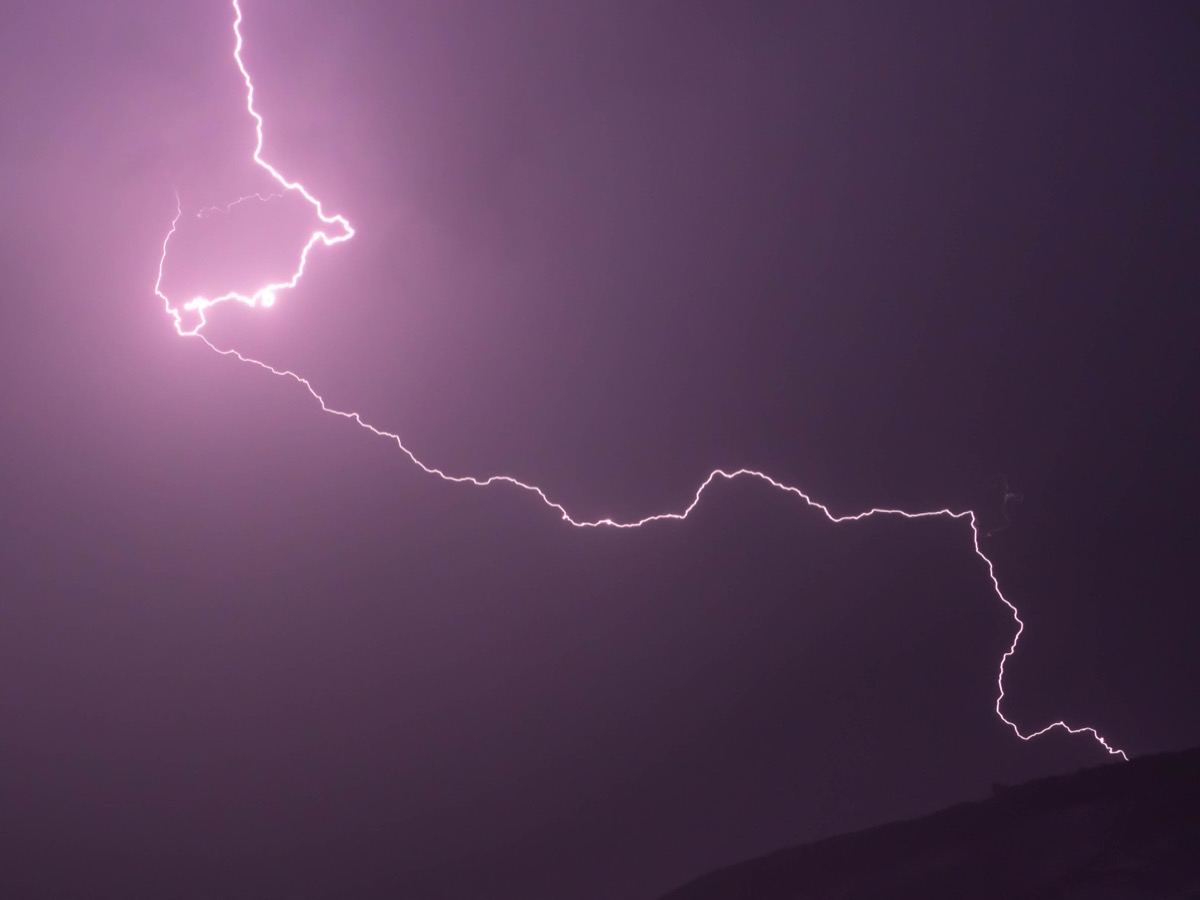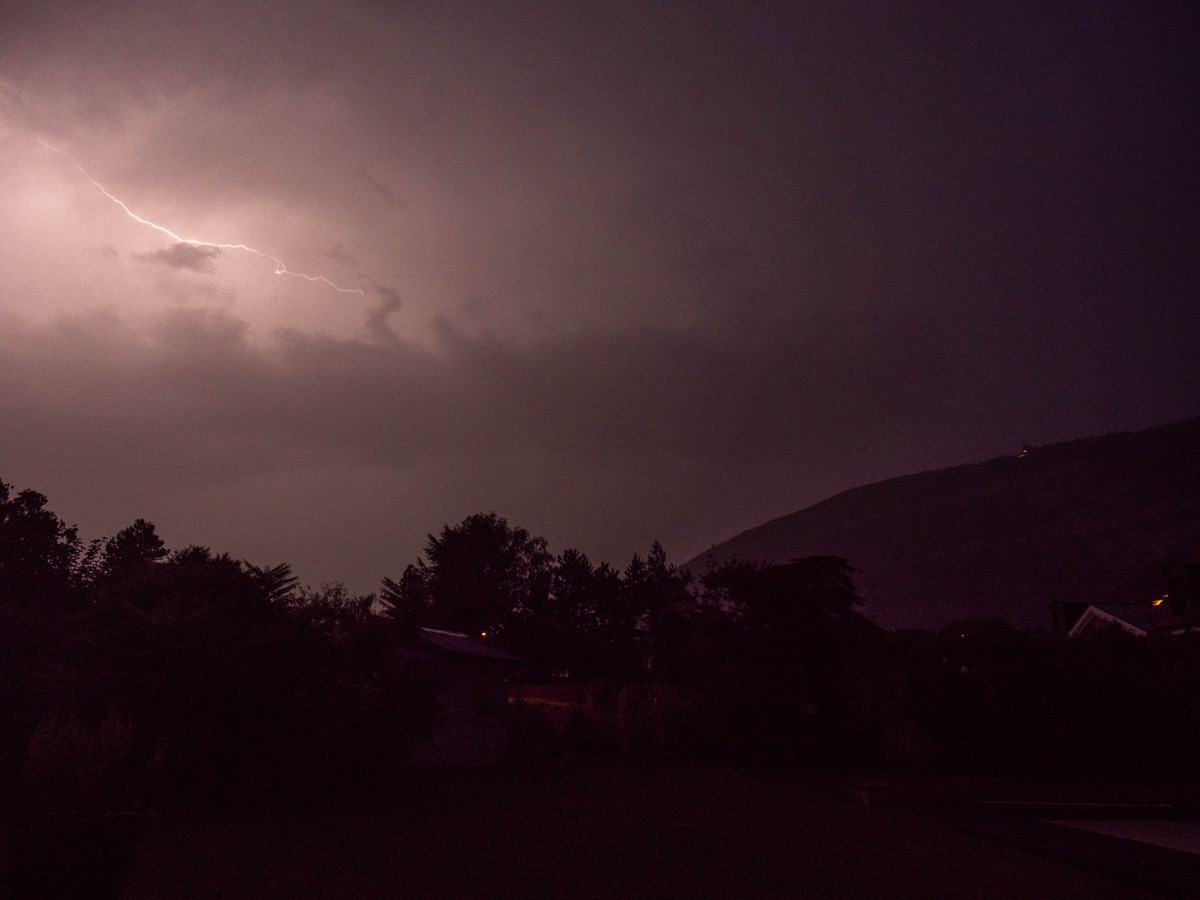Definition
Lightning is a natural electrical discharge of very high intensity that occurs in the atmosphere, usually during a thunderstorm. It appears as a flash of light, often followed by thunder, which is the result of the sudden expansion of air heated to extreme temperatures.
Formation mechanism
Inside cumulonimbus clouds — tall storm clouds — intense convective movements cause electrical charge separation:
- Positive charges accumulate at the top of the cloud;
- Negative charges build up at the bottom.
The ground, by electrostatic influence, becomes positively charged. When the potential difference between these regions becomes high enough (tens of millions of volts), the air — normally an insulator — becomes conductive, initiating a discharge. This forms a lightning bolt, which can connect different cloud regions or strike the ground.
Types of lightning
Several types of discharges are recognized:
- Cloud-to-ground lightning (CG): the most spectacular and dangerous, directly striking the ground.
- Intra-cloud lightning (IC): the most common, confined within a single cloud.
- Cloud-to-cloud lightning (CC): less visible, connects two separate clouds.
- Upward lightning: originates from the ground and travels upward, typically from tall structures (towers, antennas).
- Transient luminous events: sprites, blue jets, and elves, occurring in the mesosphere or stratosphere, still under scientific study.
Physical parameters
- Temperature of a lightning bolt: up to 30,000 °C — five times hotter than the surface of the Sun.
- Current intensity: from 10 to 200 kA.
- Typical duration: a few dozen microseconds.
- Length: from hundreds of meters to several kilometers.
Risks and impacts
- Biological: electrocution, burns, cardiac or neurological issues.
- Material: fires, power surges in electrical networks, damage to electronic equipment.
- Environmental: forest fires, local changes in atmospheric chemistry.
Prevention and safety
- Do not shelter under an isolated tree.
- Avoid open fields or elevated areas.
- Seek shelter in a closed building or a vehicle with a metal body.
- Do not use landline phones or electrical appliances during a storm.
- Install lightning arresters on sensitive buildings.
Conclusion
Lightning, although a long-standing companion of terrestrial storms, continues to fascinate and inspire scientific research. Understanding it involves meteorology, plasma physics, electromagnetism, and materials science. Despite its beauty, lightning remains a potentially destructive phenomenon that must be observed with caution.
Appenzell, Switzerland
July 27, 2019. Panasonic Lumix GH5, Panasonic-Leica DG 8–18mm.
Veyrier, Switzerland
July 30, 2017. Panasonic Lumix GH5, Panasonic-Leica DG 12–60mm.
